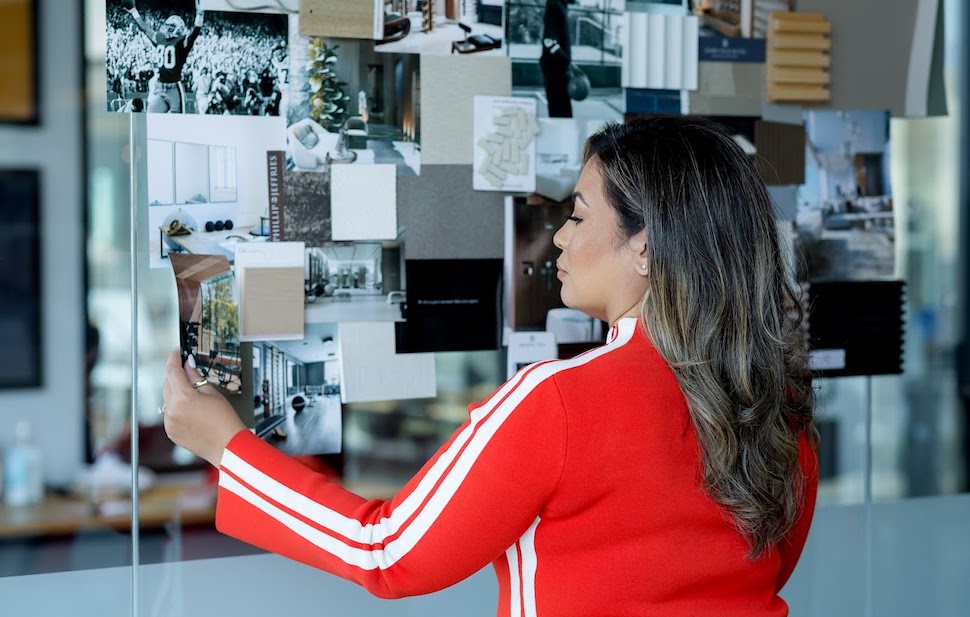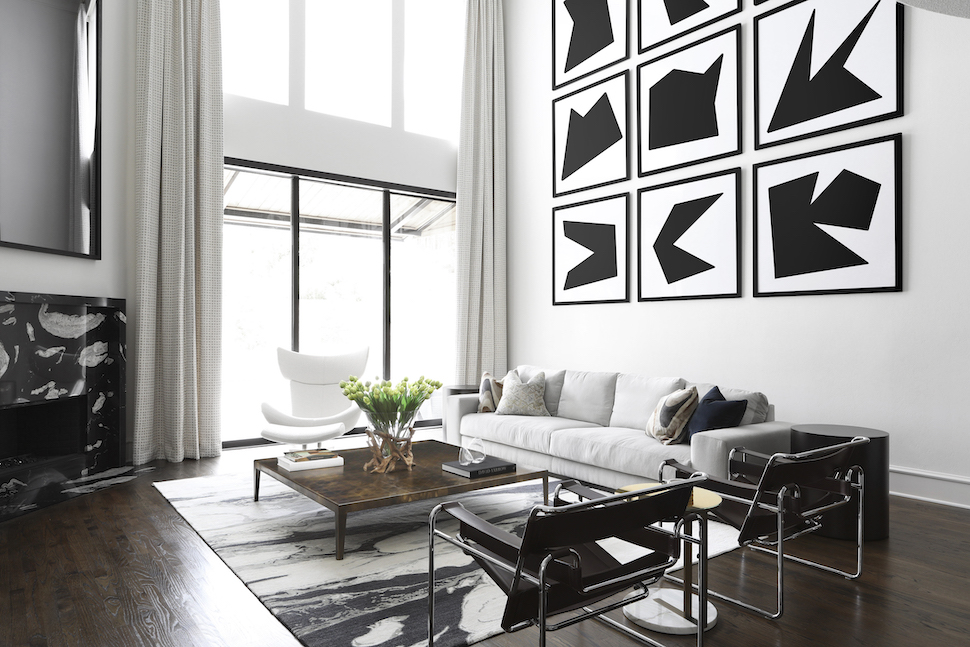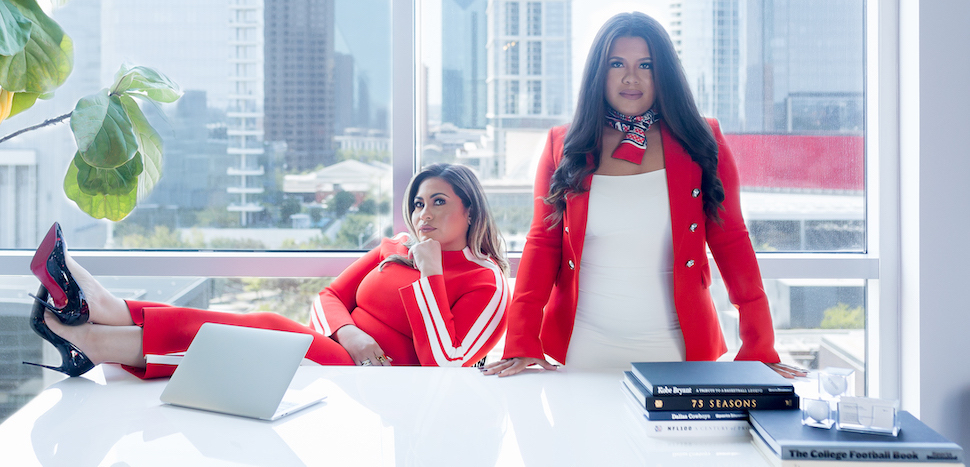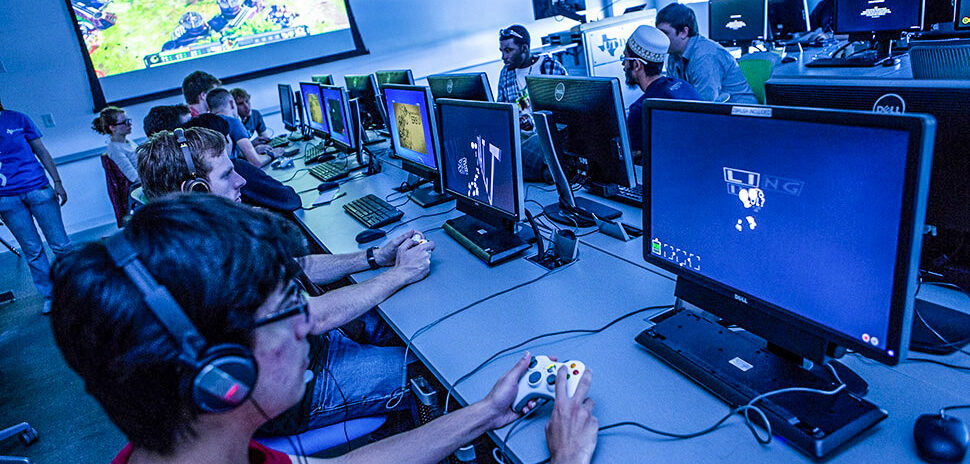Can a quarterback throw more touchdowns if his living room has optimal lighting? Can a point guard score a triple double if her bedroom is an oasis of stress-reducing bliss? That’s what one Dallas design firm is counting on with a concept aimed at pro athletes in North Texas and beyond.
Brazilian-born interior designer Juliana Oliveira has transformed living spaces for nearly 12 years with her firm Beyond Interior Design, which is located at One Arts Plaza in the downtown Dallas Arts District.
Now, with her sister Sara De Oliveira, she’s kicked off a new design concept to turn pro athletes’ homes into “recharging stations”: Athlete-Centric Design.
The goal of their offering—a new extension of the firm—is to transform pro athletes’ lifestyles with luxury interior design that improves their performance on the field through health and wellness elements.
Juliana is owner and principal designer of Beyond Interior Design; Sara is its director of operations. As co-founders of Athlete-Centric Design, they bring different skill sets to the new practice.

Juliana Oliveira, co-founder of Athlete-Centric Design. [Photo: Maribel Morales]
Interior design can impact emotional, mental, and physical health
“Born in Brazil, most of my childhood was spent by the ocean and becoming one with the outdoors,” Juliana told Dallas Innovates. “As time passed by, my passion for science started intersecting within design as I began my career. I prioritize not only how a space looks but how it makes you feel and the positive impact it can have on your health—emotionally, mentally, and physically.”
The photo below demonstrates a wellness element of Athlete-Centric Design. The living room was designed to maximize the impact of natural light to help regulate the occupant’s circadian rhythms. According to the design team, living in an environment like this can reduce stress, depression, and illness while sharpening one’s mental focus.

In this living room designed by the firm, optimal lighting regulates circadian rhythms; reduces stress, depression, and illness; and sharpens one’s focus. [Photo: Matti Gresham for Beyond Interior Design/Athlete-Centric Design]
A sports background informs the new practice
Sara’s six-year background in sports management is a key element of the co-founders’ new offering.
“Through my experience in the sports industry, I was able to see firsthand athletes’ journeys from different stages of their career,” Sara told us.
Pro athletes are often on the move between teams and cities, with incomes that can suddenly skyrocket, leading to a steady need for new digs. But their high-octane schedules and travel can make it hard to make high-level design decisions.
“Their time and well-being weren’t always being considered,” Sara noted of athletes she’s worked with in the past. “I found a passion within the player experience that has fueled a fire within me to create solutions for their life betterment.”
‘Biophilic design’ infuses wellness elements into athletes’ homes
One of Beyond Interior Design’s key differentiators is infusing each project with “biophilic design”—an approach that keeps a home’s occupants connected to the natural environment through the use of direct and indirect nature, promoting a wide range of health benefits.
Athletes spend endless hours training their bodies to a state of ideal physical readiness. But then they come home to environments that may have indoor air pollutants two to five times higher than outdoor levels, or worse. Their living space may lack natural light, or have design elements that can darken moods instead of lightening them.
“The design of a home has various components that affect an athlete’s health and wellness,” Juliana says. “Some elements include air, sound, lighting, sleep, water, and thermal comfort. When it comes to each of these wellness elements, we embed and utilize the latest in technology and equipment needed to achieve maximum results via the Athlete-Centric Design experience.”
The pandemic showed the importance of a healthy home
In the early days of the pandemic—when athletes nationwide found themselves spending endless hours cooped up at home—the need for healthy living spaces got even more attention.
“My Brazilian roots have always propelled me to incorporate the importance of health and wellness to any project we execute,” Juliana said in a statement. “During the pandemic, we began to reassess our business to ensure that we are staying true to the purpose of helping others live a better life through design, and the Athlete-Centric Design experience was born. Alongside Sara, we began to build a transformative design experience that evolves with each professional athlete, not the other way around.”
Enhancing performance, resilience, cognitive strength and more
Athlete-Centric Design focuses on creating luxury home environments that enhance pro athletes’ performance, resilience, cognitive strength, physical health, and overall efficiency—while also bearing in mind that they have a life after sports.
Each “design concept and experience” not only turns a home into a luxurious dwelling—it creates a “recharging station” by positively impacting systems including cardiovascular, respiratory, digestive, muscular, nervous, endocrine, and more, the design team says.
The team doesn’t stop at lighting, furnishings, and design choices. They also work with wellness partners who specialize in fitness centers and have access to the industry’s most innovative workout devices, to ensure peak training right at home.
A ‘customized, fast-track’ design process
The co-founders try to address all the pain points athletes face. One is having to deal with a designer when you’re in the middle of an intense practice drill—or catching a flight to a stadium 1,000 miles away. To maximize an athlete’s time, the design team developed a “customized, fast-track process” with as few meetings and check-ins as possible.
“The process has become ultra-refined to one to two meetings, which is suitable for the professional athletes’ on-the-go lifestyle,” Juliana says.
“A consultation is the first step that can be done via our text-centric and intuitive concierge, which is personalized for each prospective client’s needs,” Sara added.
24/7 concierge supports daily tasks and special occasions
The firm also offers extended services including a 24/7 concierge with a private phone line, personalized relocation services, property management, and maintenance services. The design team also seeks out the latest innovations in home tech integration to infuse within their clients’ homes.
“We’ve curated our design process to go beyond the usual client experience and on presentation day it definitely shows,” Juliana says. “On this day, our team shares with each client a comprehensive design and we’ve added a virtual reality experience so our clients get a unique walk-through of their space.”
Making their approach a best practice in the sports industry
Sara says the firm will soon launch Athlete-Centric Design in the form of a “curriculum” to help educate athletes and teams on the importance of their approach.
“We’d like to see it transcend past the home and throughout the sports industry as a whole,” Sara says.
![]()
Get on the list.
Dallas Innovates, every day.
Sign up to keep your eye on what’s new and next in Dallas-Fort Worth, every day.


































































